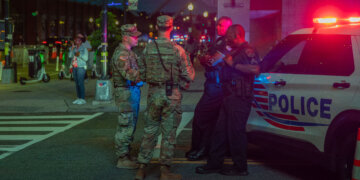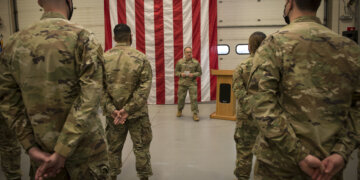In direct response to recent executive orders, the U.S. Northern Command (USNORTHCOM), or the combatant command and operational lead for the Department of Defense’s role on the southern border, activated Joint Task Force-Southern Border (JTF-SB) at Fort Huachuca, Arizona, with the 10th Mountain Division from Fort Drum, New York, as its Headquarters Battalion. The command announced in a press release that JTF-SB “assumed the role of synchronizer of several USNORTHCOM activities and military forces from Joint Task Force-North (JTF-N)” on March 14.
“The Army has a nearly 250-year history of providing unique military capabilities for our national leaders. This mission is no different,” said Army Maj. Gen. Scott Naumann, JTF-SB commander, in a press release. “From Imperial Beach, California, to McAllen, Texas, we will employ those capabilities and technology to bolster the efforts of our interagency partners, in order to gain operational control of the border, as ordered.”
Soon after taking the oath of office, President Donald J. Trump immediately signed close to 10 executive orders related to the southern border and immigration. Specifically, executive orders to secure the southern border, declare a national emergency in the region, and to clarify the military’s role were published by the end of Inauguration Day. While the DOD’s involvement on the border isn’t new (soldiers from Fort Bliss and Fort Hood, Texas, deployed to the border in 2012), the recent orders have resulted in a mission expansion for active duty, reserve and National Guard military members.
When the original request for assistance (RFA) came to the DOD from the U.S. Department of Homeland Security in 2018, USNORTHCOM deployed approximately 7,000 troops to California, Arizona and Texas as Joint Task Force-North (JTF-N). By October 2024, there were about 2,500 National Guard members serving on the mission, according to Eduardo Natividad, a spokesperson at JTF-N Headquarters. After Jan. 20, the number of troops expected to deploy in support of the southern border mission is about 10,000, though USNORTHCOM said the exact number will fluctuate as units rotate in and out of the area of responsibility (AOR).

Marine Lt. Col. Vincent Young, the JTF-N chief of operations, said the expansion goes beyond the number of troops but also includes an expansion of the type of support DOD personnel are authorized to provide DHS.
“Pre- Jan. 20, 90% of our seven approved tasks in support of DHS have been focused on detection and monitoring,” he said. “That has been a key priority task in all of DOD support to DHS, and that has not changed. The expansion of the tasks has included general engineering support and intelligence analysis.”
USNORTHCOM also announced that 40 intelligence analysts from Air Force active and reserve components, and 590 engineers from the U.S. Army Corps of Engineers and the U.S. Army 18th Airborne Corps, would deploy to join JTF-SB. DOD personnel are also authorized to support Customs and Border Protection (CBP) agents with tasks including data entry, vehicle maintenance, training, warehousing and logistical support, and transportation support.
Tennessee Army National Guard Lt. Col. Robert Crowley has been deployed to the AOR for two years, in support of the DHS’s RFA for fiscal year 2025.
“It’s an evolving mission so there’s a lot more appetite to entertain new ideas and how the military specialty can be brought to the southern border,” said Crowley, the 168th Military Police Battalion commander. “Especially with the guard and reserve having the additional background with jobs outside of the military. You’ve got citizen soldiers who have skill sets both within the military and from their home job – so, utilizing that across the border where we can be the biggest benefit in defense of the homeland.”

The variance of skill sets is reflected in soldiers such as Alabama Army National Guard Sgt. John Melancon, whose military occupational specialty is 31B, or military police. However, on the southern border mission, Melancon uses his civilian job experience to provide essential equipment and supplies to CBP agents with logistical support. He’s been stationed on the border for about a year and said the expansion has enabled CBP to focus more on their mission.
“One of the things we do when we come in to do these jobs is we’re helping to relieve CBP,” Melancon said. “The agents have that responsibility and a job to do. When we’re able to fulfill tasks that would typically pull them away, they can actually do what they’re there to do. That’s where we really see those changes and how it’s affecting the mission.”
The National Guard Bureau said in a January press release that it would increase its support to USNORTHCOM and provide additional personnel, military airlift, barrier construction and more. At the time, more than 4,000 Texas National Guard members were stationed on the border as part of Operation Lone Star. According to USNORTHCOM, there are 17 states who have activated guardsmen to support the mission on the southern border.
On the ground: Alabama, Florida, Georgia, Michigan, North Dakota, South Dakota, South Carolina, Tennessee, Utah, Wisconsin, and West Virginia.
Aviation support: Arkansas, Arizona, California, Colorado, Hawaii, New Mexico, and Ohio.
Read comments
















































